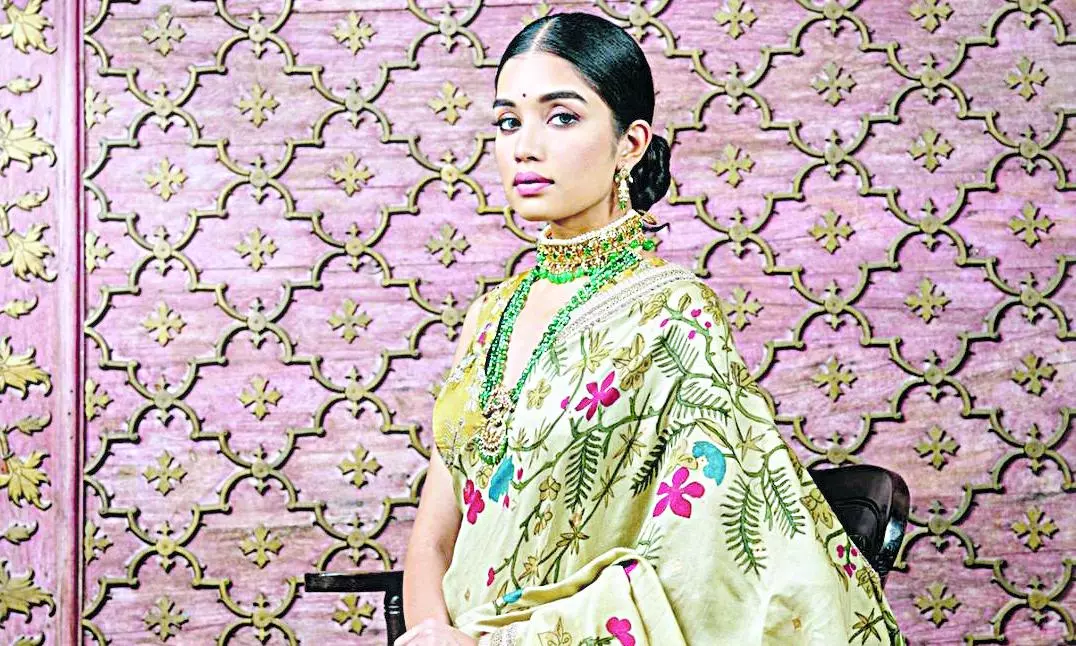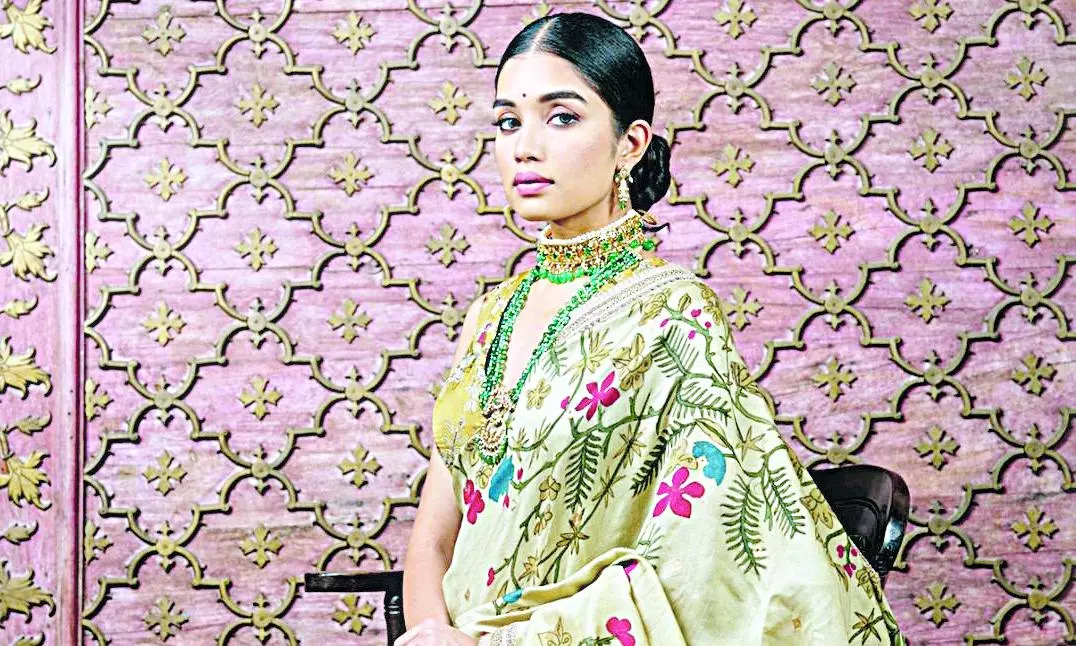
In recent years, the fashion industry has seen a notable resurgence of craftsmanship in the luxury sector. This return to artisanal traditions highlights a growing appreciation for the artistry, dedication, and heritage embedded in fashion’s finest creations. Fast fashion, while accessible and affordable, often comes with significant ethical and environmental costs. Consumers are becoming conscious of these downsides. They are seeking clothes with aesthetic appeal, ethical integrity and longevity. Enter the renewed focus on craftsmanship in the fashion industry.
“Timeless artistry is precious. It is indeed a fragile and intricate process — the weaving of Banarasi fabric, which demands patience and dedication. With our artisans, we focus on authenticity and the skill that goes into creating the craft. There’s a push for a significant level of speed, yet the collections show how we devote time and thought to each piece,” says Khushi Shah, owner of Shanti Banaras.
For luxury fashion houses, the return to craftsmanship is more than a reactionary move. It is a reclamation of the heritage. Craftsman-ship, after all, is what has long set luxury fashion apart from the fast fashion world. These brands have always been synonymous with meticulous attention to detail, quality fabrics, and timeless designs. Consumers are seeking more from their wardrobes — durability, and authenticity. Luxury houses are refocusing on ancient craftsmanship and their roots.
Archana Jaju, owner, Archana Jaju says that they use old techniques like hand embroidery, Kalam-kari, and Zardozi in creating their designs. “All these methods not only become a means of storytelling in each product but also symbolize the rich cultural heritage of India. Details and patterns and how they come together are not merely aesthetic choices but reflections of olden traditions, and so each garment is a bridge between the past and the present,” says Archana.
One of the driving forces behind this shift is the desire for uniqueness. In a market saturated with identical, machine-made garments, handcrafted pieces represent something special. Every stitch, fold, and detail tells a story of human hands and techniques passed down through generations, and of the cultural traditions that inspire fashion’s finest creations. “Banarasi handloom weaving is the core of our designs. Through generations of weavers from Varanasi, each piece that we make is a testament to this rich legacy. Storytelling within our collections comes through in the intricacies of motifs and patterns, each of which holds cultural significance and makes our contemporary pieces part of a tradition spanning centuries,” says Khushi.
This return to artisanal craftsmanship can be seen in the revival of techniques such as hand embroidery, tailoring, and textile creation. Intricate beading, once reserved for haute couture, is making its way back into collections, offering consumers the chance to wear something genuinely unique.
Sustainability & Craftsmanship
Another key factor driving this renewed focus on craftsmanship is the growing emphasis on sustainability in fashion. Fast fashion industry’s negative environmental impact has been under scrutiny. In contrast, the artisanal approach encourages slower, more mindful production, often using higher quality, sustainably sourced materials that result in garments with longer life spans.
“This craft allows the wearer to wear creations that might be passed down for generations. Handwoven fabrics and natural fibres breathe life into clothes meant to last decades. These pieces aren’t just a fashion item; they’re a part of family heirlooms sewn together with the quality-of-care mass-produced goods cannot. All of this leads to slow fashion, waste reduction, and intimacy with what one wears,” adds Khushi.
Behind the Scenes
At the heart of this shift are the artisans whose skills are now being championed and celebrated. Historically, these craftsmen and craftswomen have often remained in the shadows, with little recognition for their contributions to the industry. As the demand for handcrafted pieces grows, so too does the visibility of the artisans behind them.
“Craftsmanship will always be at the heart of luxury fashion. Though technology may bring efficiency, the soul in luxury is human touch and attention to detail. The customers will be targeting handcrafted pieces that they will see as authentic and connected; thus, there will be a stay of craftsmanship as part of the future for luxury fashion,” says Archana.
Khushi adds that the more knowledgeable a consumer is about his or her decisions, the more the consumer will seek out and cherish handmade, artisanal pieces.
A Lasting Legacy
Modern consumer looks for meaning and depth in what they wear. Heritage can only be made relevant to this modern fashion landscape by allowing traditional weaving techniques to meet high-edge designs. “It’s not about trends, but giving consumers something timeless,” says Khushi.
The return to craftsmanship in fashion is not just a fleeting trend but a significant movement toward more thoughtful, sustainable, and meaningful design. Consumers are increasingly drawn to pieces that tell a story — one of human skill, tradition, and care. Archana says that craftsmanship is always sustainable. “Each stitch on our pieces is well taken care of to make them long-lived and durable. Significant investment in materials and techniques can be employed to make the pieces, which will ultimately result in something beautiful that will stand well against time, fundamentally opposing the ephemeral nature of mass production.”
This renaissance of craftsmanship speaks to a larger cultural shift: one that values authenticity over speed, quality over quantity, and heritage over novelty.
